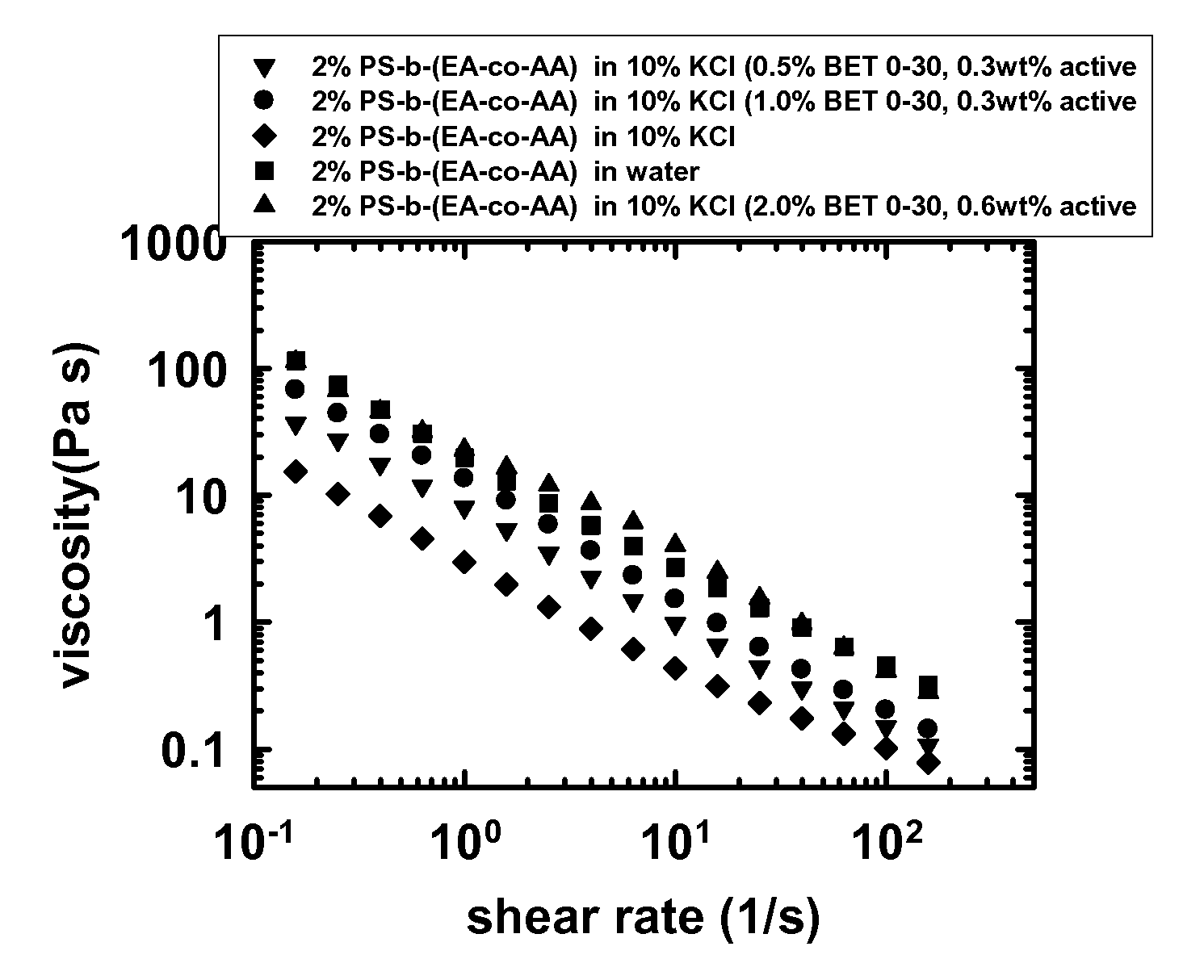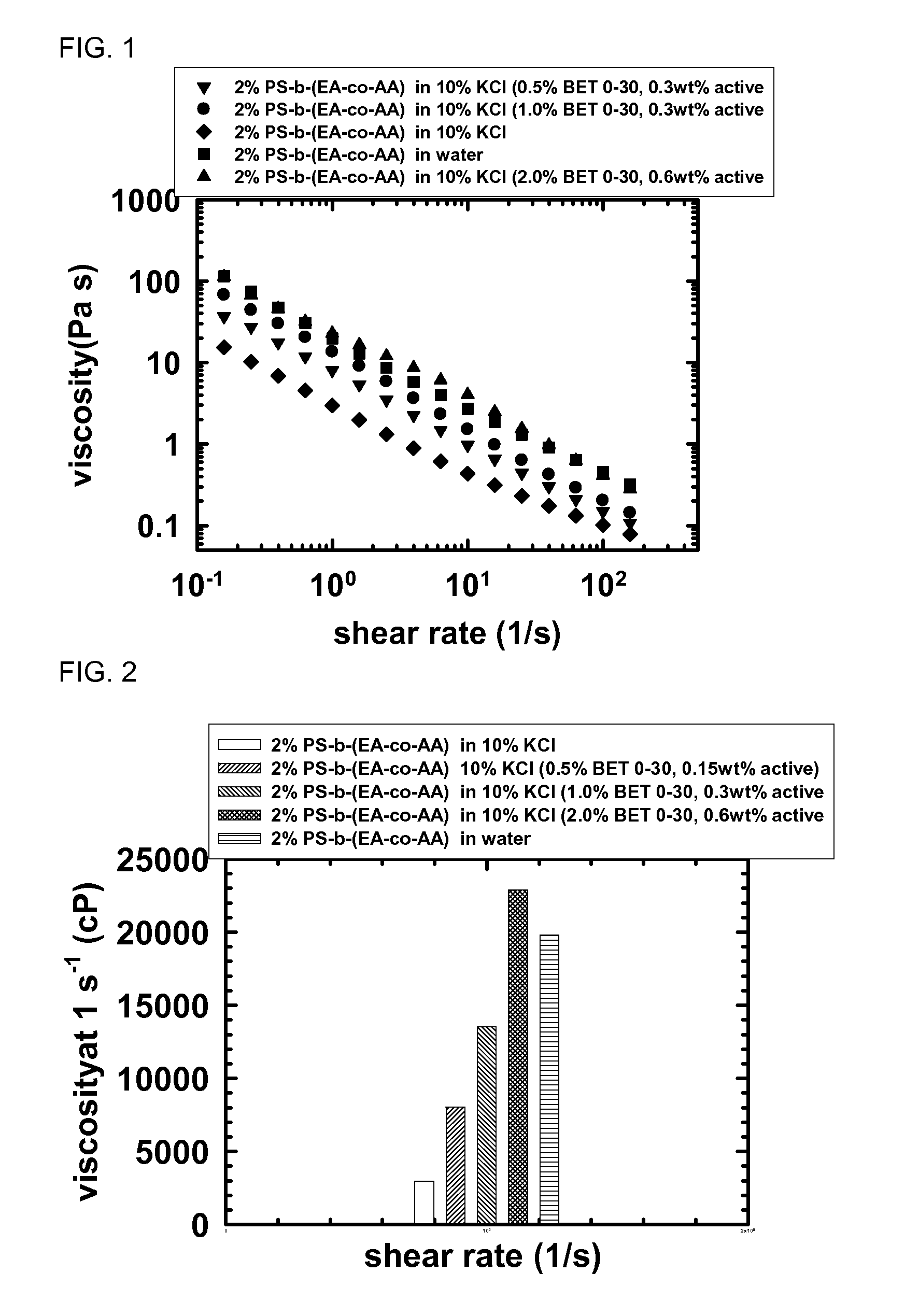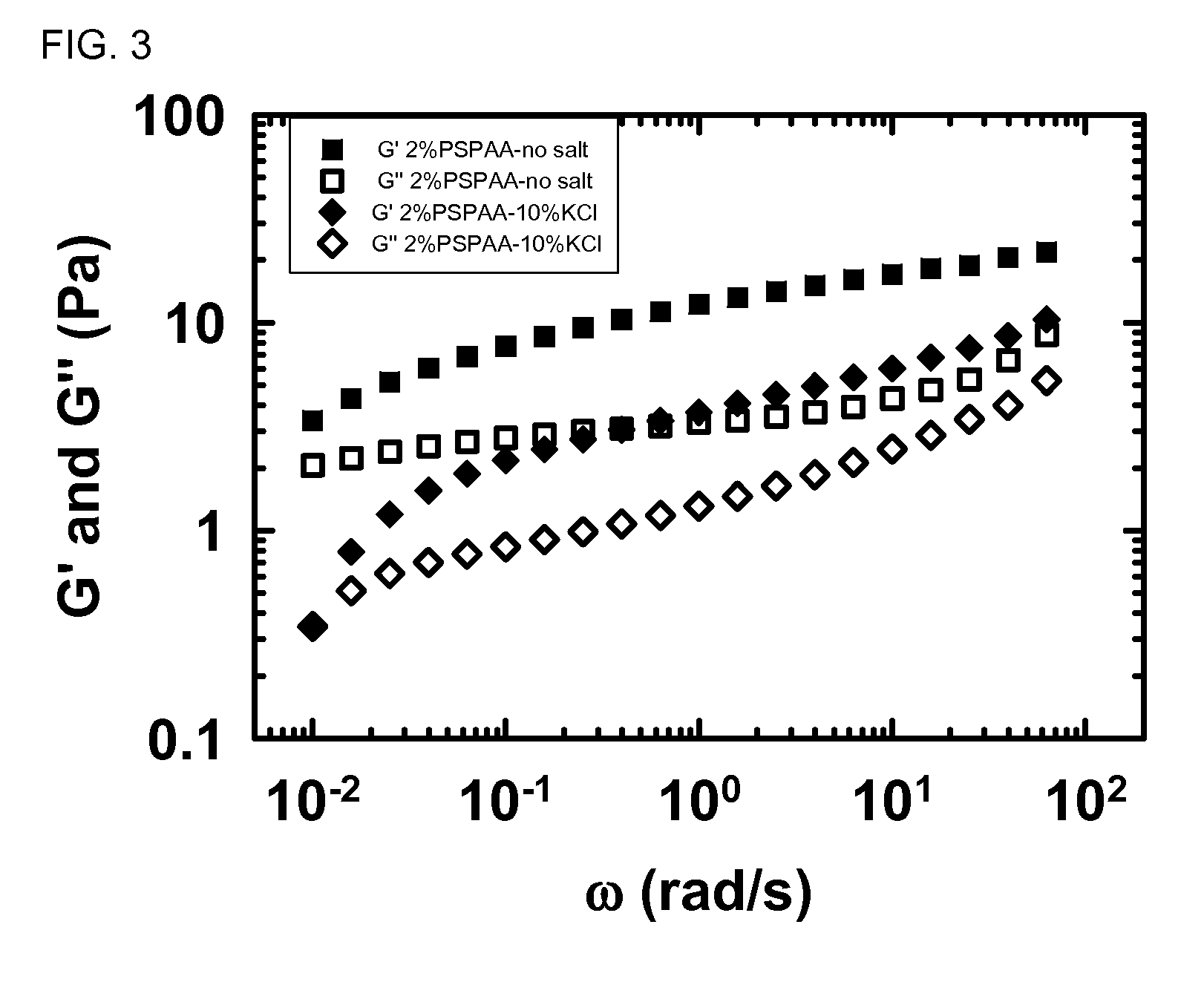Addition of zwitterionic surfactant to water soluble polymer to increase the stability of the polymers in aqueous solutions containing salt and/or surfactants
a technology of surfactant and zwitterionic acid, which is applied in the direction of sealing/packing, separation process, and wellbore/well accessories, etc., can solve the problems of low salt resistance of polyelectrolyte and hydrophobically modified polyelectrolyte polymers, disadvantages in breakdown, and low viscosity and stability of these polymers, so as to protect or recover the viscosity and/or viscoelastic properties of water
- Summary
- Abstract
- Description
- Claims
- Application Information
AI Technical Summary
Benefits of technology
Problems solved by technology
Method used
Image
Examples
example 1
[0176]It is well known that the presence of salt breaks down the viscosity of polyelectrolytes. Thus, a first example tested if a zwitterionic surfactant could protect a PS-b-(EA-co-AA) diblock that is 70% hydrolyzed. The diblock was 3 k polystyrene 30K EA-co-AA (30K ethylene acetate-co-acrylic acid).
[0177]A solution of water soluble polymer was diluted to the required value in water and mixed with high speed homogenizer (ULTRA TURRAX T-25) at a speed of 20000 rpm. The resulting viscosity and viscoelasticity were measured in an AR-G2 rheometer (TA instruments) with a 4 degree 40 mm cone and plate geometry. Electrolytes were added (typically 10 wt % KCl for these examples), mixed with high speed homogenizer and the resulting viscosity and viscoelasticity were measured. Zwitterionic surfactant additives were added and mixed with high speed homogenizer and the resulting viscosity and viscoelasticity were measured. Here the term viscoelasticity refers to the viscoelastic storage (G′) or...
example 2
[0181]In this example the effect of anionic surfactants on a polyelectrolyte was tested. A small amount (about 0.2 wt %) of Sodium Laureth Sulfate (SLES) will normally break down the viscoelasticity of the PS-b-(EA-co-AA) diblock solution in de-ionized water. The procedure for this experiment is the same as described above, with the exception that the Sodium Laureth Sulfate was added in lieu of the electrolyte.
[0182]The addition of long chain zwitterionic surfactant recovered the viscoelasticity of the polyelectrolyte mixed with anionic surfactant.
example 3
[0183]This example investigated the salt resistance of PS-b-(EA-co-AA) diblocks with the addition of zwitterionic surfactants. This example showed the viscoelasticity can be recovered through the addition of a betaine surfactant. The final blends were always clear gels without phase separation.
[0184]FIG. 3 shows viscoelastic data G′ and G″ for 2 wt % PS-b-(EA-co-AA) diblock with and without salt. The procedure was the same as described above.
[0185]FIG. 4 shows viscoelastic data G′ and G″ for 2 wt % diblock, 10 wt % KCl and 2 wt % zwitterionic additive. The larger alkane chains prevent the degradation of the viscoelasticity in salt. The other zwitterionics, however, contribute to the loss of viscoelasticity in this concentration range. The procedure was the same as described above.
[0186]FIG. 5 shows the viscosity results are similar to the results for the viscoelasticity. In FIG. 5 PSPAA is PS-b-(EA-co-AA) diblock, BET E-44 is MIRATAINE BET E-44, CBS is MIRATAINE CBS, BET O-30 is MIR...
PUM
| Property | Measurement | Unit |
|---|---|---|
| weight % | aaaaa | aaaaa |
| weight % | aaaaa | aaaaa |
| weight percent | aaaaa | aaaaa |
Abstract
Description
Claims
Application Information
 Login to View More
Login to View More - R&D
- Intellectual Property
- Life Sciences
- Materials
- Tech Scout
- Unparalleled Data Quality
- Higher Quality Content
- 60% Fewer Hallucinations
Browse by: Latest US Patents, China's latest patents, Technical Efficacy Thesaurus, Application Domain, Technology Topic, Popular Technical Reports.
© 2025 PatSnap. All rights reserved.Legal|Privacy policy|Modern Slavery Act Transparency Statement|Sitemap|About US| Contact US: help@patsnap.com



